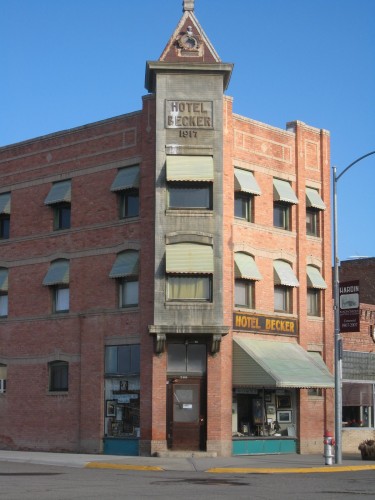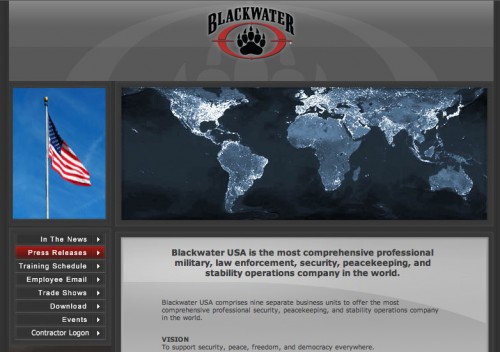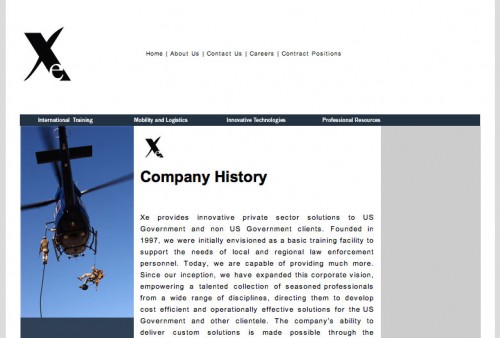 Hardin, Montana, population approximately 3,500, situated on the remote northern Great Plains, not far from Little Bighorn.
Hardin, Montana, population approximately 3,500, situated on the remote northern Great Plains, not far from Little Bighorn.
Like countless other small towns, Hardin’s fortunes have waned as traditional industries have become less profitable or simply moved on.
In 2004 the city created the Two River Authority (TRA), a quasi-governmental economic development agency charged with creating jobs. TRA’s first project was the construction of a prison in conjunction with Corplan Corrections Inc., a Texas company that specializes in pushing detention centers on economically desperate small towns. The Hardin prison was touted as a no brainer; Montana had a growing inmate population and shortage of prisons. Convinced that a new facility would be quickly filled, TRA obtained $27.4 in revenue bonds for the new detention center. The bonds were to be repaid from the prison’s revenues and did not cost the taxpayers a dime.
By 2007 the jail was complete. There was, however, one small problem… it had no inmates. Relations between the TRA and the State of Montana had soured; the state was now claiming that there had never been any deal to house prisoners in the facility.
Community Education Centers, a for-profit prison corporation, and the jail’s preliminary operator, began to seek inmates from out-of-state. But when the Montana attorney general put the breaks on this plan, TRA was forced to take the case to court. A year later, the court granted TRA’s request to seek prisoners from beyond Montana’s borders; surely some states had extra prisoners in need of a new home. Even the new governor of Montana, skeptical of the program from the start, lent a hand, inviting officials from neighboring states, Indian tribes and the federal government to tour the facility. But none were impressed, and the jail sat empty; even the for-profit prison management corporation figured it was time to get out of town. TRA had built it, but nobody had come.
And so set in the desperation. First, upon hearing of President Obama’s plans to close Guantanamo, TRA began to pitch the facility as the ideal place to house the displaced enemy combatants. These efforts garnered international attention and led to such an outcry by Montana residents that state officials stepped and indicated that no such deal would be forthcoming. Though the Guantanamo plan ultimately failed, the media storm surrounding it had succeeded in broadcasting the woes of Hardin to the world. It was now mid-2009; the jail had been empty for over two years.
 Enter Michael Hilton, President of the American Police Force (APF). Hilton, who prefers to be called “Captain Michael,” approached the TRA and explained that his company was eager to run the jail and build a large special-forces training center on adjacent land. APF (unlike Blackwater (Xe), DynCorp, or CACI) is a relative newcomer to the private security racket. Its militaristic website boasts a wide array of services, including: Special Forces Training, Convoy Security, and, until it was recently removed, International Arms Sales (including WMDs). In mid-August, 2009, APF and TRA signed an agreement stating that APF would operate the jail.
Enter Michael Hilton, President of the American Police Force (APF). Hilton, who prefers to be called “Captain Michael,” approached the TRA and explained that his company was eager to run the jail and build a large special-forces training center on adjacent land. APF (unlike Blackwater (Xe), DynCorp, or CACI) is a relative newcomer to the private security racket. Its militaristic website boasts a wide array of services, including: Special Forces Training, Convoy Security, and, until it was recently removed, International Arms Sales (including WMDs). In mid-August, 2009, APF and TRA signed an agreement stating that APF would operate the jail.
From the beginning, APF’s plans were met with skepticism. After Hardin city officials stated that prisoners from California would be housed in the facility, California officials responded that no such agreement had been made. Likewise, though APF claimed that the federal government was it biggest client, no trace of it could be found in federal contractor databases. Local media outlets, seeking information about APF’s operations, were denied any information, ostensibly for security reasons. Hardin residents were of two minds about the city’s potential benefactor; while some eagerly hoped to cash in on the promised job opportunities, others were beginning to question the legitimacy of the entire deal.
 On September 24, 2009, APF came to Hardin, arriving in three black Mercedes SUVs emblazoned with “City of Hardin Police Department” decals. There was only one problem… the City of Hardin did not have a police department; the County Sheriff’s office was responsible for law enforcement within the city. Though TRA authorities attempted to assure a jittery populace that APF’s contract was limited to operation of the jail and training facility, the damage had been done. Though the decals were promptly removed, citizens who had been following this saga at arm’s length were suddenly up in arms.
On September 24, 2009, APF came to Hardin, arriving in three black Mercedes SUVs emblazoned with “City of Hardin Police Department” decals. There was only one problem… the City of Hardin did not have a police department; the County Sheriff’s office was responsible for law enforcement within the city. Though TRA authorities attempted to assure a jittery populace that APF’s contract was limited to operation of the jail and training facility, the damage had been done. Though the decals were promptly removed, citizens who had been following this saga at arm’s length were suddenly up in arms.
Following APF’s inflammatory entry, it did little to endear itself to an increasingly skeptical population, refusing to reveal its parent company, financial backers or from where it would collect inmates for the facility. This excessive shroud of secrecy prompted detailed investigations by local and national media into APF and Hilton, its elusive and tight lipped leader. The results were stunning, though to many, hardly shocking. In 1993, Hilton had plead guilty to 14 felonies, including 10 counts of grant theft. He had been named as a defendant in multiple cases alleging fraud, breach of contract and breach of warranty. He had declared multiple bankruptcies, and, the coup de gras, had gone by over a dozen aliases. Hardin, it seemed, had been conned.
The Montana Attorney General got involved again, seeking answers to many of the same questions both wary citizens and dogged journalists had posed. Montana’s Governor went on the record stating that the people of Hardin had been duped, not just by APF, but by Corplan into building the white elephant in the first place.
Then, on October 9th, just two weeks after APF first rolled in to Hardin, it backed right out. The official reason given for cancelling the contract involved unforeseen costs associated with replacing an analog telephone system and damaged security cameras at the jail. But as details have emerged of Hilton’s pending court date in California regarding another scam gone awry, it seems clear that the jig is up.
 As if all of this is not interesting enough, there are two side-stories worth noting. The first concerns Greg Smith, former executive director of TRA. Just two days after TRA announced the deal with APF, Smith was placed on paid leave; to this date, no reason has been given for his suspension. Smith’s wife, Kerri, is currently a finalist in the city’s mayoral race. Hilton had stated on record that he advised Kerri to call him about a job with APF should her bid for mayor be unsuccessful. On October 5th, in a closed door meeting, Greg Smith formally resigned from TRA.
As if all of this is not interesting enough, there are two side-stories worth noting. The first concerns Greg Smith, former executive director of TRA. Just two days after TRA announced the deal with APF, Smith was placed on paid leave; to this date, no reason has been given for his suspension. Smith’s wife, Kerri, is currently a finalist in the city’s mayoral race. Hilton had stated on record that he advised Kerri to call him about a job with APF should her bid for mayor be unsuccessful. On October 5th, in a closed door meeting, Greg Smith formally resigned from TRA.
 The second mini-drama involves Becky Shay, a former reporter with the Billings Gazette and APF’s current spokesman. Shay abruptly quit her job with the Gazette the day after APF arrived in Hardin, morphing quickly from reporter to stonewaller. In a press conference held days before the deal fell apart, Shay broke down in tears multiple times. It is unclear whether Shay will remain as APF’s spokesman or if her first paycheck will clear.
The second mini-drama involves Becky Shay, a former reporter with the Billings Gazette and APF’s current spokesman. Shay abruptly quit her job with the Gazette the day after APF arrived in Hardin, morphing quickly from reporter to stonewaller. In a press conference held days before the deal fell apart, Shay broke down in tears multiple times. It is unclear whether Shay will remain as APF’s spokesman or if her first paycheck will clear.
There’s more… the Billings Gazette has uncovered that the original agreement, ostensibly regarding the jail, also contained a clause which might explain the “Hardin Police Department” SUVs. TRA granted APF the right to submit a proposal to provide police services to the city. Indeed, the concern about private mercenaries patrolling the streets of Hardin under the color of law constituted the bulk of early rumors surrounding the whole deal.
So what’s the moral to this story? Is it just a sad case of desperate people getting conned? Corrupt local politics? That’s part of it, but there’s more going on here. This saga speaks to the moral and visionary bankruptcy of modern America. An economically depressed town pins its future hopes on a prison, peddled by a private corporation seeking to profit from increased incarceration. A simple fact about corporations is that they must grow to survive and please their stakeholders. Corporations in the business of constructing or managing prisons want more Americans behind bars, and will work towards that goal. A strange video slideshow (archived – download and open in browser) on the TRA website presents the Hardin jail as a wonderful place just waiting to be brought to life. But a prison is hardly a place of great promise; we should be ashamed that incarceration is one of our few remaining growth industries. Prisons should not be for-profit.
And how about civics? Privatizing Hardin’s police force is against the Montana constitution, but this is just what TRA seemed to have had in the works.
What about the glorification of militarism? APF’s website attempts to impress with dark colors, rousing music, and pictures of soldiers, weapons and war machines. When did war become chic, rather than the nightmare that it is?
And how about due diligence? How could TRA and city leaders go on record day after day praising APF when simple investigations would have revealed information that ought to have given any reasonable person pause?
But there’s an upside too. The public unraveling of APF in Hardin was fostered by a combination of traditional and new media. Local television stations and newspapers reported on the story as it unfolded while investigative blogs and personal bloggers spread the story around the internet. Some good investigative journalism happened here, without which, Hardin, Montana might just have been duped, once again.
Sources:
- KULR 8, Billings Montana
- Billings Gazette
- MontanaWithKids.com
- TPM Muckraker
- Two Rivers Authority


